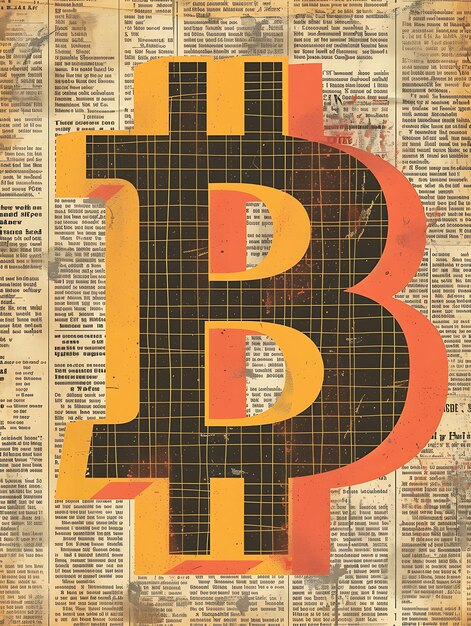Tokenized News: Microtransactions & the Future of Journalism in the US

Tokenized news platforms utilizing microtransactions offer a potential solution to subscription fatigue in the US journalism industry by enabling readers to pay for individual articles or segments of content, thereby diversifying revenue streams and potentially revitalizing news consumption.
The media landscape in the US is evolving, with traditional subscription models facing challenges. Could tokenized news, powered by microtransactions, be the key to rescuing journalism from subscription fatigue?
The Subscription Fatigue Problem in US Journalism
Subscription models have become the norm for many online news outlets. However, a growing phenomenon known as subscription fatigue is impacting their effectiveness, especially in the US.
What exactly causes subscription fatigue, and why is it a significant concern for the future of journalism?
The Roots of Subscription Fatigue
Subscription fatigue arises from the overwhelming number of subscription services vying for consumers’ attention and wallets.
Consequences for the News Industry
This fatigue has serious consequences for US journalism, hindering its ability to generate revenue and sustain quality reporting.
- Reduced revenue streams for news organizations.
- Decreased readership and engagement with news content.
- Potential decline in the quality of journalism due to financial constraints.
- Increased reliance on alternative, potentially unreliable, news sources.
In conclusion, subscription fatigue poses a significant threat to the sustainability of journalism in the US. Exploring innovative methods, such as tokenized news and microtransactions, is crucial to address this challenge and ensure the continued availability of trustworthy information.

Understanding Tokenized News Platforms
Tokenized news platforms represent a novel approach to content monetization. These platforms leverage blockchain technology to create a more transparent and equitable ecosystem for both publishers and consumers.
But how do these platforms function, and what are the core technologies behind them?
The Mechanics of Tokenization
Tokenization involves converting news articles or access to news content into digital tokens on a blockchain.
Blockchain and Microtransactions
Blockchain technology enables secure and transparent microtransactions, allowing readers to pay for content on a per-article or per-segment basis.
- Users purchase tokens using traditional currency or cryptocurrency.
- Tokens are used to unlock access to individual articles or content segments.
- Publishers receive payment directly through the blockchain, reducing transaction fees.
- Smart contracts automate the process, ensuring transparency and immutability.
Ultimately, tokenized news platforms offer an alternative to traditional subscription models, providing flexibility and control for both publishers and consumers, with the promise of a revitalized news ecosystem.
Microtransactions as a Solution to Subscription Fatigue
Microtransactions present a compelling alternative to traditional subscription models by allowing consumers to pay for individual news articles or segments, empowering news consumers in the US.
What are the potential benefits of this payment model, and how could it reshape the relationship between readers and news providers?
Empowering News Consumers
Microtransactions grant readers greater control over their news consumption, enabling them to select and pay for only the content they value.
Diversifying Revenue Streams for Publishers
This approach opens up new revenue streams for publishers, expanding their potential audience beyond traditional base subscribers.
- Attract readers who are hesitant to commit to a full subscription.
- Monetize niche content that may not appeal to a broad audience.
- Generate revenue from occasional readers who only need access to specific articles.
- Reduce reliance on advertising revenue, which can be volatile and intrusive.
Therefore, microtransactions have the potential to revitalize the US journalism industry by promoting choice, diversifying revenue, and fostering a more direct connection between readers and news providers.

Examples of Tokenized News Platforms
Several platforms are already pioneering the tokenized news model. They are demonstrating its potential to disrupt the traditional media landscape and offer new opportunities for both publishers and consumers.
Which platforms are leading the way, and what are their unique approaches to tokenized news?
Civil
Civil aimed to create a decentralized news ecosystem, empowering journalists and fostering community engagement.
Brave and Basic Attention Token (BAT)
Brave Browser integrated the Basic Attention Token (BAT) to reward users for their attention and provide a new revenue model for publishers, focusing on user privacy and control.
- Users earn BAT by viewing privacy-respecting ads.
- BAT can be used to support websites and content creators.
- Publishers receive BAT based on user attention to their content.
- This model aligns incentives between users, publishers, and advertisers.
These examples illustrate the growing interest in tokenized news, despite the challenges, offering a glimpse into the potential future of journalism financing and distribution.
Challenges and Criticisms of Tokenized News Solutions
Although tokenized news offers promise, it also faces significant challenges and criticisms that need addressing for widespread adoption.
What are the obstacles that could hinder the success of tokenized news, and how can the industry overcome them?
Scalability and Transaction Costs
Blockchain technology can face scalability issues and high transaction costs, potentially creating barriers to microtransactions.
User Adoption and Education
Educating users about blockchain technology and tokenized systems can be a barrier to adoption, requiring user-friendly interfaces.
- Simplify the process of purchasing and using tokens.
- Provide clear explanations of the benefits of tokenized news.
- Offer tutorials and support to guide new users.
- Partner with established news organizations to build trust and credibility.
Overcoming these challenges will be crucial for the success of tokenized news solutions. Addressing concerns about scalability, user experience, and regulatory clarity will pave the way for broader acceptance and real-world impact.
The Future of Journalism: A Hybrid Model?
The future of journalism could likely involve a hybrid model. It combines the best aspects of traditional subscriptions, advertising, and innovative approaches such as tokenized news and microtransactions.
How can these different models coexist and complement each other to create a sustainable ecosystem for news organizations?
Combining Subscriptions and Microtransactions
Offering both subscription options and microtransactions can cater to diverse user preferences, thus increasing customer base.
The Role of Advertising
While diversifying revenue streams is crucial, responsible and non-intrusive advertising can still play a role in supporting journalism, contributing to the news ecosystem.
- Prioritize user experience by limiting ad frequency and intrusiveness.
- Focus on contextual advertising that is relevant to the content.
- Explore alternative advertising models, such as native advertising and sponsored content.
- Offer ad-free subscription options for users who prefer a premium experience.
To conclude, a hybrid model that combines the strengths of different approaches may provide the most sustainable path forward for the US journalism industry, ensuring its long-term viability and ability to serve the public interest.
| Key Point | Brief Description |
|---|---|
| 📰 Subscription Fatigue | Readers are overwhelmed by subscription options. |
| 💰 Microtransactions | Pay-per-article system offers flexibility. |
| 🔗 Tokenized News | Blockchain secures transactions and content access. |
| ⚖️ Hybrid Model | Combines subs, ads, and microtransactions. |
FAQ
▼
Tokenized news refers to platforms that use blockchain technology to monetize news content, often through microtransactions. This involves converting articles into digital tokens.
▼
Microtransactions allow readers to pay a small fee for individual articles or content pieces, rather than subscribing to an entire publication. This offers flexibility and choice.
▼
Readers gain control over the content they consume, paying only for what they need. This can be more economical than a full subscription for occasional news readers.
▼
Challenges include scalability issues, transaction costs, and the complexity of user adoption. Educating users about blockchain is crucial for success.
▼
While not a guaranteed solution, tokenized news can certainly help diversify revenue streams and address subscription fatigue, contributing to a more sustainable journalism ecosystem.
Conclusion
Tokenized news and microtransactions offer a promising avenue for revitalizing US journalism in the face of subscription fatigue, providing a more flexible and equitable model for both content creators and consumers. While challenges remain, the potential benefits of this innovative approach warrant further exploration and development to secure the future of quality journalism in the digital age.





